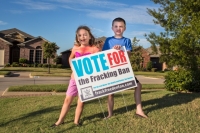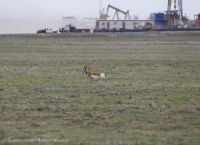If you want to see the future of the shale industry — what today's drilling rush will leave behind — come to Bradford, Pennsylvania.
A small city, it was home to one of America's first energy booms, producing over three quarters of the world's oil in 1877. A wooden oil rig towering over a local museum commemorates those heady days, marking the first “billion dollar oil field” in the world.
But times have changed dramatically in Bradford. Most of the oil has been pumped out, leaving residents atop an aging oil field that requires complicated upkeep and mounting costs. Since its height in the 1940's, Bradford's population has steadily declined, leaving the city now home to only 8,600 people, down from over 17,000.
The story of Bradford these days is a story of thousands of oil and gas wells: abandoned, uncapped, and often leaking.
To drive through McKean County, home to Bradford and much of the Allegheny National Forest, is to witness an array of creative ways people have found to hide the remnants of this bygone boom. Rusted metal pipes — the old steel casings from long abandoned wells — jut from lawns and roadsides. Mailboxes are strapped to some of the taller pipes. In autumn, abandoned wells are tucked behind Halloween props and hay bales in front yards.
The aging steel pipes aren't just on land. They line creek beds, water flowing around one rusted pipe then another.
Hundreds are even submerged in the Allegheny Reservoir, small bubbles of methane gas the only visible sign of their existence. But in many cases, these rusted top hats from now deceased wells simply protrude from locals' lawns.
They are visual reminders that, for local communities where mining or drilling happens, fossil fuel wealth burns hot and short. Where there's a boom, there's bound to be a bust.





























